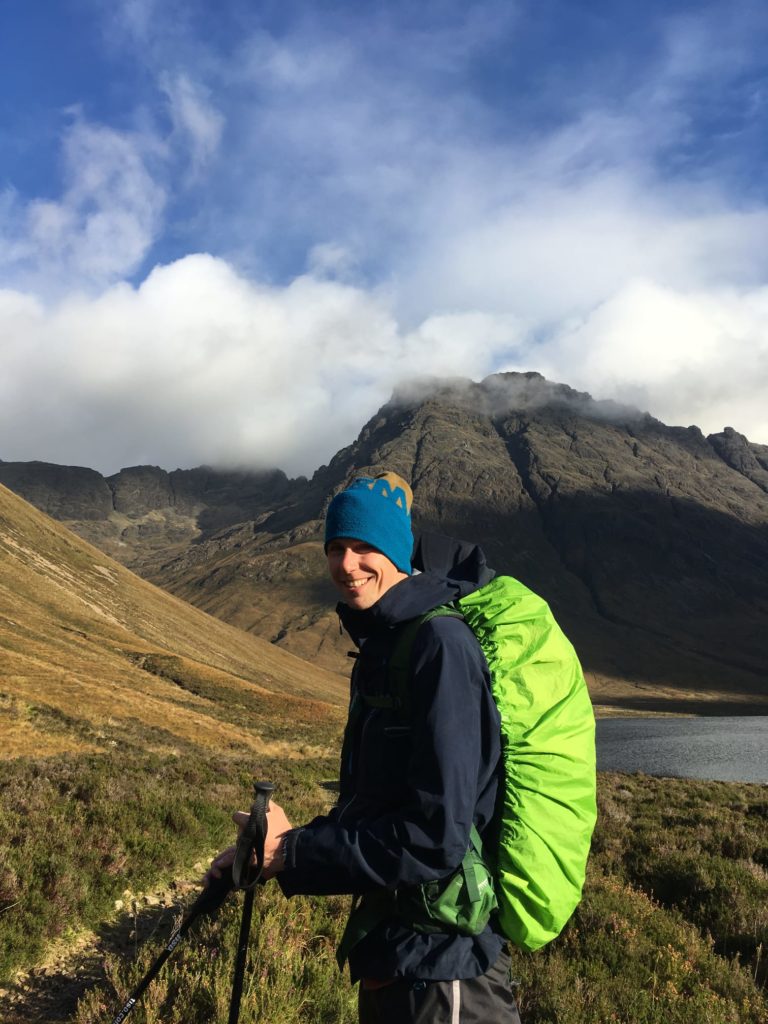Using fundamental ecosystem understanding to inform land management.
Dr Tom Parker’s research focuses on the role of plant roots and associated fungi in ecosystem processes such as carbon exchange, and takes him across natural and semi-natural ecosystems from UK peatlands to the Arctic tundra and forests across the world.
Looking belowground
“One of my key research questions,” Tom says, “is how does climate- or human-driven change in plant communities influence the long-term storage of carbon in soils.” This is reflected in projects studying the impacts of various processes – treeline advance into the Arctic, peatland restoration, tree-planting and rewilding – on root and microbial processes.
Tom’s work in the Arctic – with an international network of Arctic ecologists – has shown that treeline advance, both northward and to higher altitudes, leads to increased soil activity, counterintuitively causing losses of carbon from the system despite growth in biomass aboveground. “My colleagues and I are encouraging ecologists to look to belowground biodiversity and processes to understand the whole-ecosystem impacts of tree encroachment,” he explains.
Similarly, he has contributed to research that shows that tree-planting on UK moorlands does not result in net ecosystem carbon sequestration on decadal timescales, despite likely biodiversity gains. This research is helping to inform where trees should be planted and where there may be limited, or negative changes in carbon-capture potential.
In peatlands, as part of the James Hutton Institute’s Peatland Research Team and working with NatureScot’s Peatland ACTION programme, Tom is helping to better quantify the benefits of peatland restoration. “Personally, I am aiming to understand the detailed belowground ecology of peatlands, to inform which species are particularly beneficial for long-term carbon storage,” he says.
Real world problems
Tom’s undergraduate degree at The University of Sheffield introduced him to the idea of ‘ecosystem ecology’ – the study of complex ecological interactions and their impact on large-scale processes such as gas fluxes. “Since then,” he says, “I have been fascinated with ‘unpicking’ ecosystems to understand how they work. I enjoy using my interest and passion for understanding how the world works to address real-world problems. In particular, I enjoy trying to understand how living organisms, big and small, interact together to influence how much carbon is stored in an ecosystem. I believe that only by understand the ‘small stuff’ can we make sensible land-use choices.”

An MRes at the University of York and PhD at the University of Stirling on the impact of treeline advance on soil carbon, led Tom to a postdoc position at Woods Hole Marine Biological Laboratory, USA, where he continued to work on the role of Arctic plant species in ecosystem processes such as greenhouse gas production and fixation. In 2017 he moved back to Stirling to follow up on tree advancement in the Arctic, then moved to his present position working primarily on Scottish ecosystems.
The fundamental challenge Tom’s work seeks to address is how we can best use the limited amount of land that we have available to us. And in this the fine detail is important: “We must not skip over the detail when making large-scale conservation plans,” he cautions. He has plenty of plans for future research, from exploring the role of mycorrhizal fungi and their diversity on soil decomposition in Scotland, to linking the management of multiple levels of biodiversity. “For example,” he explains, “deer management can be linked to plant community ecology, root and microbial processes, and ultimately ecosystem function … There is a lot of important science to be done,” he concludes.
Dr Tom Parker is Upland Carbon Ecologist at the James Hutton Institute. His work is supported by the Scottish Government Rural and Environmental Science and Analytical Services Division, and the Macaulay Development Trust. In previous positions, Tom’s work been funded by the UKRI Natural Environment Research Council, the EU Horizon 2020 ‘INTERACT’ programme and the USA’s National Science Foundation. Find out more here.
This post is part of a series showcasing Scotland’s innovative, high-impact research supporting biodiversity conservation, in partnership with Scottish Government and NatureScot. Read the rest of the series here.
Further reading
Friggens, N.L., et al. 2020. Tree planting in organic soils does not result in net carbon sequestration on decadal timescales. Global Change Biology 26: 5178—5188. https://doi.org/10.1111/gcb.15229
Parker, T.C., et al. 2020. Rhizosphere allocation by canopy-forming species dominates soil CO2 efflux in a subarctic landscape. New Phytologist 227(6): 1818—1830. https://doi.org/10.1111/nph.16573
Parker, T.C., et al. 2021. Shrub expansion in the Arctic may induce large‐scale carbon losses due to changes in plant‐soil interactions. Plant and Soil 463: 643—651. https://doi.org/10.1007/s11104-021-04919-8
Parker, T. C., et al. 2022. Resistance of subarctic soil fungal and invertebrate communities to disruption of below‐ground carbon supply. Journal of Ecology 110: 2883—2897. https://doi.org/10.1111/1365-2745.13994
